LIFEGUARDING
ACADEMY

LIFEGUARDING
ACADEMY

Disclaimer:
Below information was collected from surveys conducted by the academy and is intended only for information purposes. The only way to be completely sure what level of first aid or CPR you need is to ask the association that is requiring you to get certified in it.
This course is the most complete level of First Aid & is always coupled with CPR level C. Standard First Aid (SFA for short) includes training on how to do CPR & choking techniques on adults, children and infants as well as how to utilize the Automatic External Defibrillator (AED).
Additionally in the SFA course, candidates learn how to deal with life-threatening circulatory and respiratory emergencies, burns, facial injuries, internal and external major bleeds, environmental emergencies, bone and joint injuries, seizures, diabetes, ribs and chest cavity related injuries, spinal and head injuries, poisoning, and critical incident stress.
Lifeguard
Summer Camp Counsellor
Child and Youth Worker
Coach
Personal Trainer
Day Care Staff
Police
Ambulance Driver
Gym Teacher
Nursing Students
Mental Health Worker
Pharmacy Technician
Laboratory Technician
Physical Therapist
Dental Hygienist
Surgical Technologist
Veterinary Doctor
Medical Equipment Preparer
Psychiatrist
Fire Fighter
Baby Sitter/Nanny
Pharmacist
Registered Massage Therapist
Developmental Service Worker
High School Teacher
Elementary School Teacher
Factory Worker
Kinesiology Students
Social Services
Medical Assistant
Diagnostic Medical Sonographer
Dental Assistant
Athletic Therapist
Occupational Therapy Aide
Phlebotomist
Dietician
MRI Technologist
Emergency First Aid is the less intensive level of first aid. This course is only 6-8 hours long and usually comes hand in hand with CPR level B. In this level, candidates learn how to perform CPR on adults and children as well as how to rescue adults and children when they are choking. In addition to CPR and choking techniques, candidates learn how to treat circulatory & respiratory emergencies as well as burns and facial injuries.
Surprisingly enough, occupations that do not seem to require first aid, do in fact need to be trained in the emergency level. A few examples of these occupations are listed below:
Security Guard
Recreational Facility Staff
Taxi Driver
Chef
Waiter/Waitress
Orderly
Scout Groups
Medical Lab Technicians
Bar Tender
Community Center Staff
Psychiatric Aide
Laboratory Animal Care Taker
The term HCP itself stands for Health Care Professional and thus all our health care professionals are required to hold a current HCP certification. While this level of CPR is wildly similar to CPR-C, there are a number of advanced techniques such as a modified jaw thrust for spinal injured victims and the two-thumb CPR for infants. Additionally candidates get trained on how to properly use the Bag Valve Mask device (BVM) instead of manual mouth-to-mouth rescue breathing techniques.
Practical Nurse
Registered Nurse
Dentist
Chiropractor
Physiotherapist
Nurse Practitioner
Pediatrician
Anesthesiologist
General Physician
Naturopathic Doctor
Surgeon
Paramedic
Optician
Nurse Anesthetist
Optometrist
Obstetrician
Almost no occupations require only CPR A, B, or C. However some regulatory licensing bodies or schools require their licensees & students to renew their CPR every year as part of their licensing requirements. Please contact your respective regulatory body to inquire about which level of CPR you need to be certified in.
Circulatory Emergencies Include:
Shock, Heart Attack & Angina, Stroke and transient strokes, as well as internal and external major bleedings.
Respiratory Emergencies Include:
Asthma & Hyperventilation.
Facial Injuries Include:
Eye, ear, nose, and mouth injuries.
Please, enter a valid value